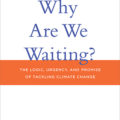Coping with climate risk: the role of institutions, governance and finance in private adaptation decisions of the poor
Working paper by David Castells-Quintana, Maria del Pilar Lopez-Uribe on 20 Jul 2015
This paper looks at adaptation from the point of view of households. It asks how political and economic institutions may help or hinder adaptation decisions. read more »



